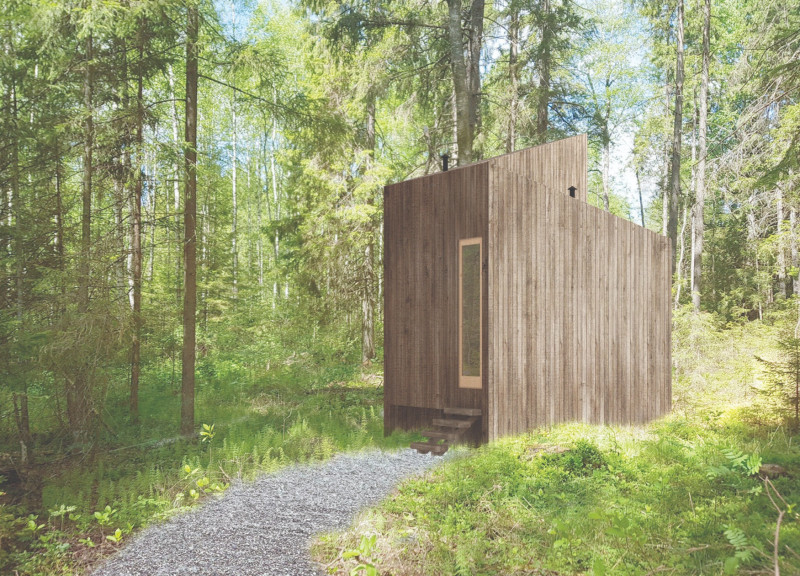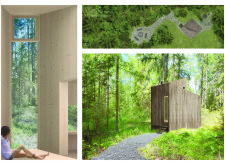5 key facts about this project
The design focuses on creating spaces dedicated to meditation and creativity, situated in a peaceful landscape. It aims to foster personal reflection and interaction with nature. The overall concept emphasizes the careful arrangement of spaces to enhance sensory experiences while supporting individual practices.
Spatial Organization
Two main areas are defined within the structure, joined by a central diagonal wall. This design allows the spaces to serve different purposes, with one zone for meditation and the other for creative activities. The arrangement facilitates user flexibility, making it possible for occupants to engage in various practices according to their needs.
Window Design
Windows are carefully positioned to enhance the overall experience. The horizontal window, which is paired with a lower ceiling, creates an intimate space that offers wide views of the surrounding landscape, ideal for activities like writing or drawing. In contrast, the vertical window increases the perception of height, focusing attention on the natural scenery outside and creating a pronounced connection with the environment.
Elevation and Ground Plane
Three linear stem walls elevate the building above the ground level, a feature that considers seasonal changes such as snow accumulation. This elevation not only provides practical benefits but also fosters a stronger connection between the interior space and the outside. The raised floor creates a sense of detachment from the ground, inviting users to engage with the environment while enjoying the shelter of the structure.
Material Selection
The choice of local pine for cladding showcases a commitment to environmental principles and regional relevance. Additionally, recycled materials are used for insulation, reflecting an awareness of sustainability. These choices enhance both the performance of the building and its visual harmony within the landscape.
Elements like the thoughtfully placed windows and the raised floors reflect a goal of merging the built environment with nature. Such details encourage users to participate actively in their surroundings, making the space conducive to both meditation and creative thought.






















































